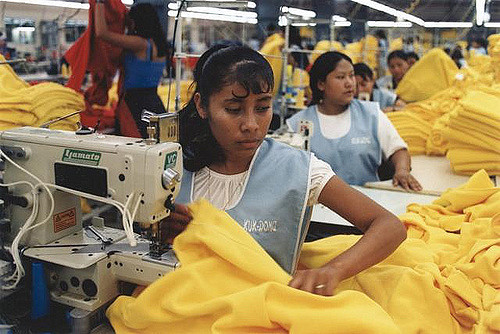Early last month on July 3, the hashtag #EndFastFashionGBV started trending on Twitter when multiple people took to the social media platform to express their grievances and concerns regarding gender-based violence in the fast fashion industry. The hashtag was created by Hoda Katebi, a political fashion blog writer and book author, who tweeted: “Q1: Fashion is undoubtedly always inherently political, from how we adorn ourselves to the clothes we use to do it. How are your clothes political and what does #ethicalfashion mean to you? #EndFastFashionGBV @GLJhub” and tagged Global Justice Labor, a transnational strategy hub for worker and migrant organizations to expand labor rights and bargaining on value chains and migration corridors.
Q1: Fashion is undoubtedly always inherently political, from how we adorn ourselves to the clothes we use to do it. How are your clothes political and what does #ethicalfashion mean to you? #EndFastFashionGBV @GLJhub
— Hoda Katebi (@hodakatebi) July 3, 2018
Building on the #MeToo and #TimesUp movements, many organizations have taken to social media to highlight the disproportionate violence that impacts women globally. “Fast fashion” is defined as “an approach to the design, creation, and marketing of clothing fashions that emphasizes making fashion trends quickly and cheaply available to consumers.” In the fast fashion industry laborers come from all over the world, and most are women.
For years, factories that manufacture clothing for fast fashion companies have been criticized for their unsafe and inhumane working conditions. Most women employees are subjected to extremely harsh work environments with little to no pay. More specifically, garment production hubs in Bangladesh, Cambodia, Indonesia, India, and Sri Lanka have been under fire for subjecting workers to such conditions. In these factories, women are given a specific production quota of clothing that they must meet and if these quotas are not met, consequences can be grave. Numerous women have shared stories of being beaten by their bosses for not making enough articles of clothing for the day, while others have recounted details of having to work excruciatingly long hours for very little pay. The number of reported injuries and instances of abuse are countless.
Organizations such as Global Labor Justice, Asia Floor Wage Alliance, and CENTRAL Cambodia are pushing for investigations of gender-based violence in major fast fashion companies in order to pressure these corporations to take action. By meeting the women who are victims of these poor labor regulations, the organizations highlight their demands: the end of violent conditions, livable wages, and reasonable working hours.
Multi-million dollar companies H&M and Gap have been the two main companies criticized for forcing women to work in unsafe conditions and subjecting their employees to sexual violence. For years, H&M has been criticized for its use of sweatshop labor and poor working conditions. Due to numerous criminal investigations and external pressures from human rights organizations, H&M promised to start paying its workers a livable minimum wage by 2018. However, none of this has been executed and H&M employees continue to suffer under cruel working conditions.
While fast fashion may be the easiest and most accessible apparel options for most people, it is vital that individuals consume responsibly. We should all educate ourselves about the conditions in which clothing is manufactured and the harm that the fast fashion companies perpetuate. Many may argue that paying laborers higher (livable) wages may increase prices of clothing making products less affordable. However, when considering the stark contrast between the wages of individuals in fast fashion factories and the net worth of CEOs of the same companies, the numbers are unsettling. Companies like H&M and Gap rake in billions of dollars in yearly profits while their workers continue to face abuse and live in poverty. The chairman of H&M has a net worth of $15.7 billion dollars while H&M workers barely make a living wage. The inhumane working conditions fast fashion companies put workers through are unnecessary and easily avoidable.
Gender-based violence in fast fashion is a consequence of a capitalist system that allows corporations to exploit vulnerable poor people who are mostly women. By paying employees less than livable wages and allowing CEOs to make millions off of their labor, corporations ensure the dependency of poor people on exploitative jobs that expose them to cruel working conditions and ultimately continue the cycle of gender-based violence.
Featured image by Marissa Orton / Creative Commons.

